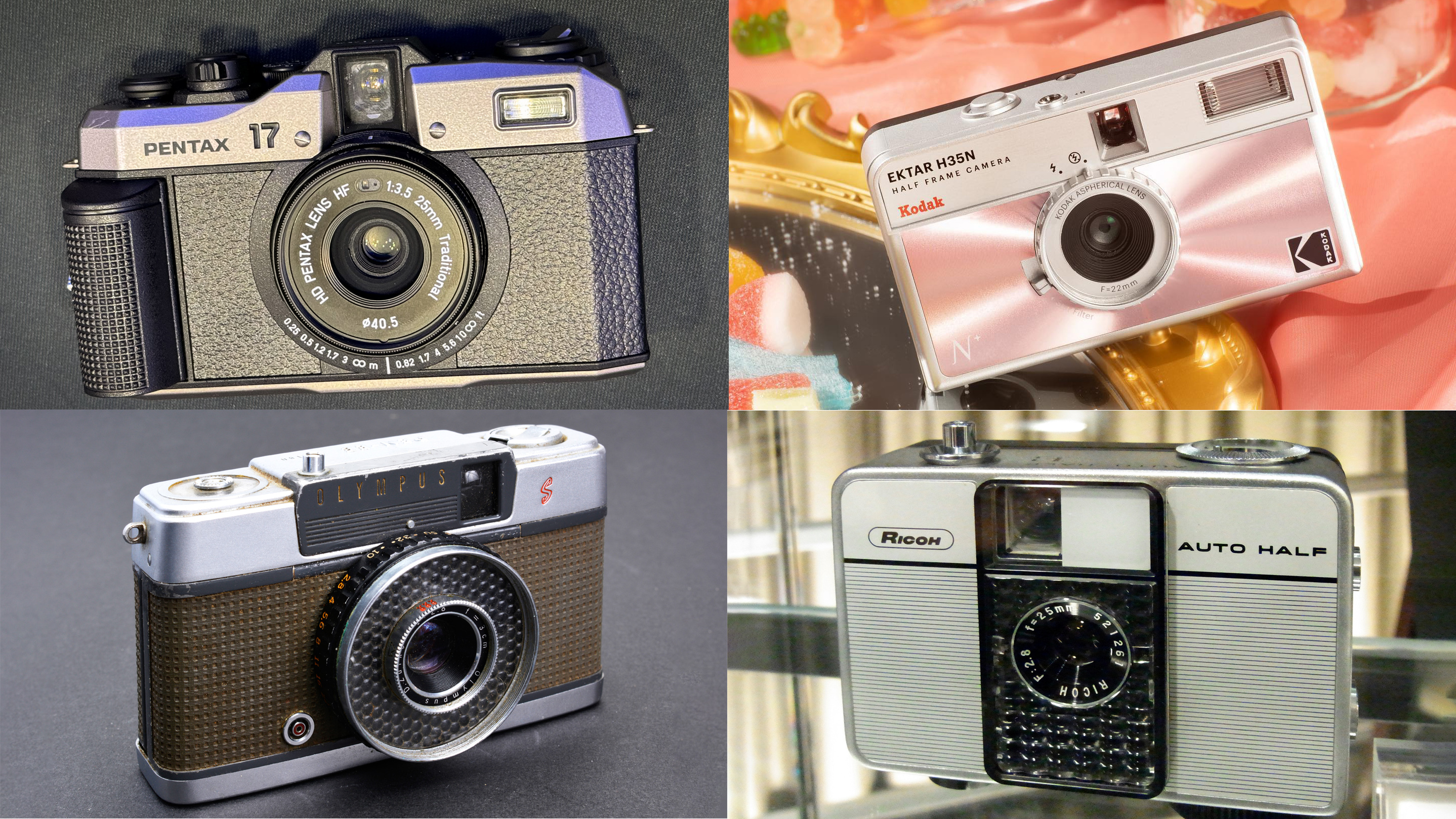
The launch of the Pentax 17, and the Kodak Ektar 35N, has brought half-frame photography to a new generation of photographers. But half-frame has a long history of getting twice as many exposures out of a roll of 35mm film…
Ever since the birth of photography, the key objective driving camera design has been to make them smaller and lighter with minimal compromises to performance and capabilities. The 35mm format was created in the 1890s by slicing 70mm movie film into half lengthwise and was gradually adopted by a number of camera makers, most notably Leitz for its new line of Leica rangefinder cameras. Kodak popularized the format – designating it ‘135’ – in the 1930s and subsequently produced a wide selection of B&W, color negative, and color transparency films.
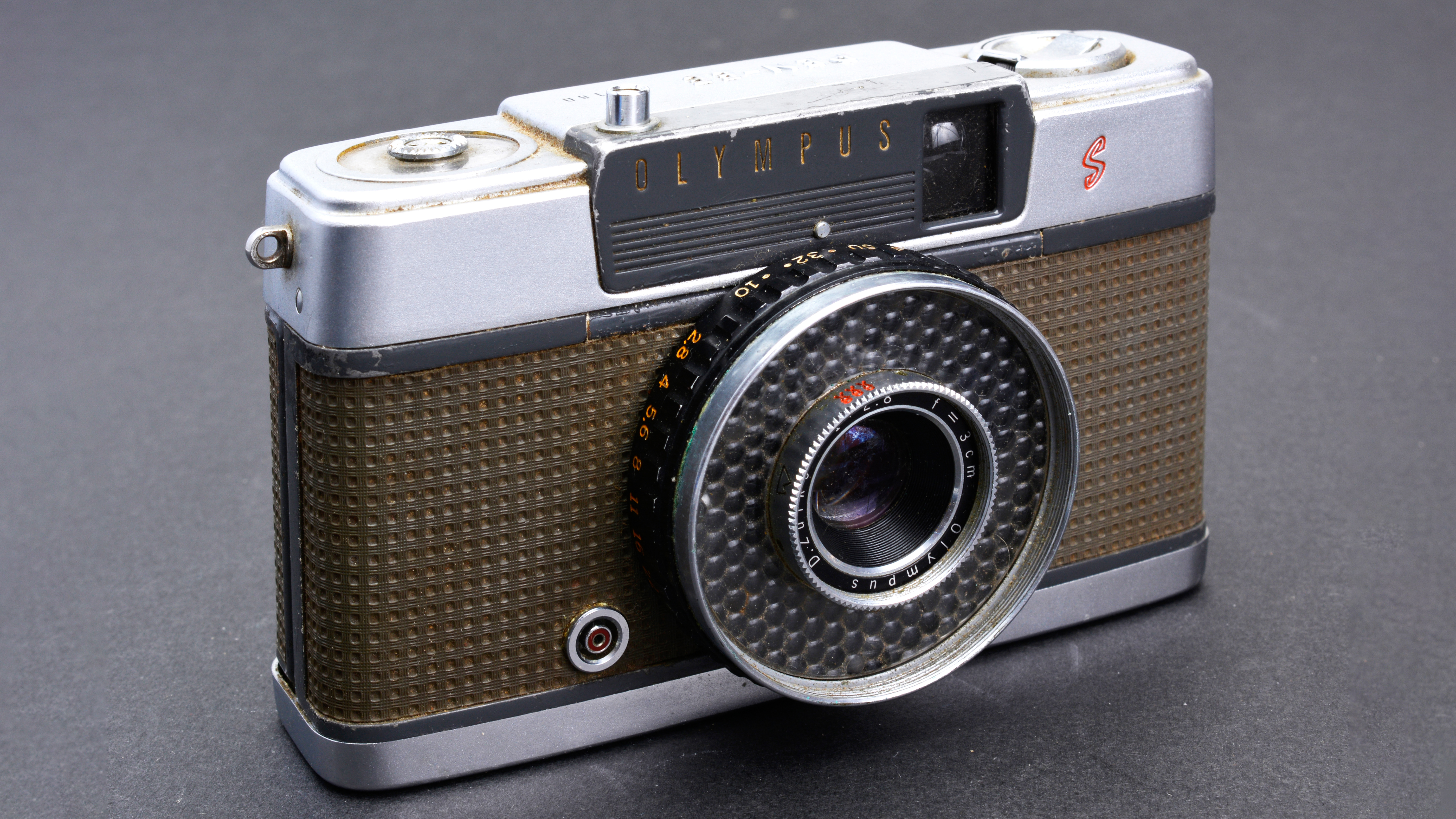
In Japan in the early 1960s, enhancing affordability was seen a key priority as well as creating smaller cameras, and this gave birth to the half frame 35mm configuration, most successfully exploited by Olympus with its PEN series, but also adopted by quite a few others including Canon, Fujifilm, Konica, Petri, Ricoh and Yashica.
The half-frame 35mm format enabled a still largely mechanical camera to be made much more compact, something that would, in due course, be made very much easier via electronics. Although they were very compact, the half-frame cameras from the 1960s weren’t necessarily basic in design, and Olympus went as far as making the Pen F series of interchangeable SLRs.
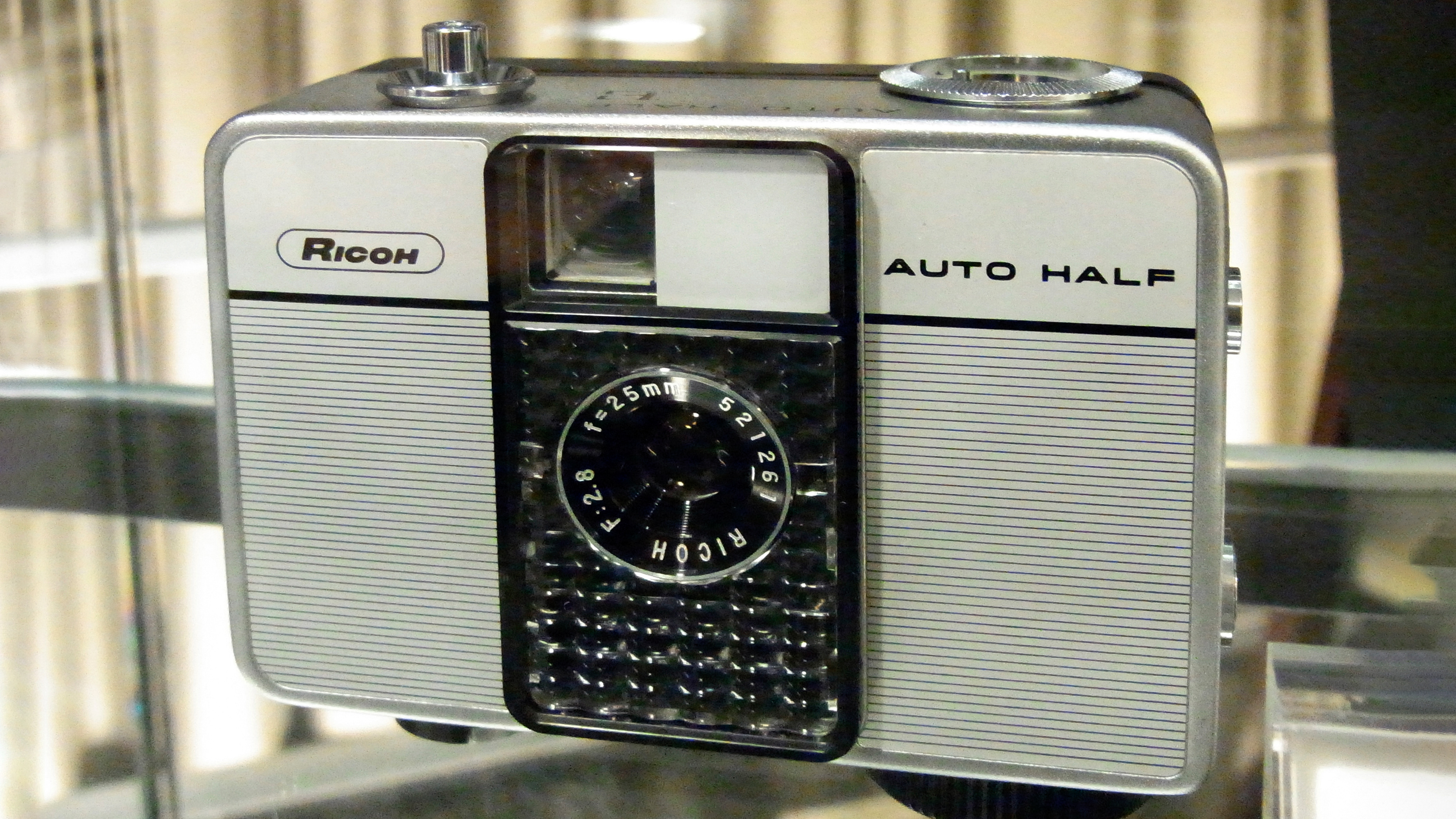
As it happens, regardless of today’s Ektar H35 models, the original Kodak didn’t make any half frame 35mm cameras as it was too busy with the 126 format and then 110. Ricoh enjoyed plenty of success with its Auto Half series of models which remained in production from 1960 to the end of the 1970s. There were neatly styled, but fairly simple little cameras with a clockwork film transport (via a knob on the base), but all had built-in metering – selenium cell at first and then, from 1970 with the
SL model, using a CdS which required a battery. The spring-drive allowed for around 15 to 20 frames to be advanced – essentially “automatically” – before it needed to be wound up again. A built-in flash was added with the EF (1978), but it also added a fair amount of awkward-looking extra bulk so it was made smaller on the last-of-the-line EF2 (1979) to better integrate with the camera’s design.
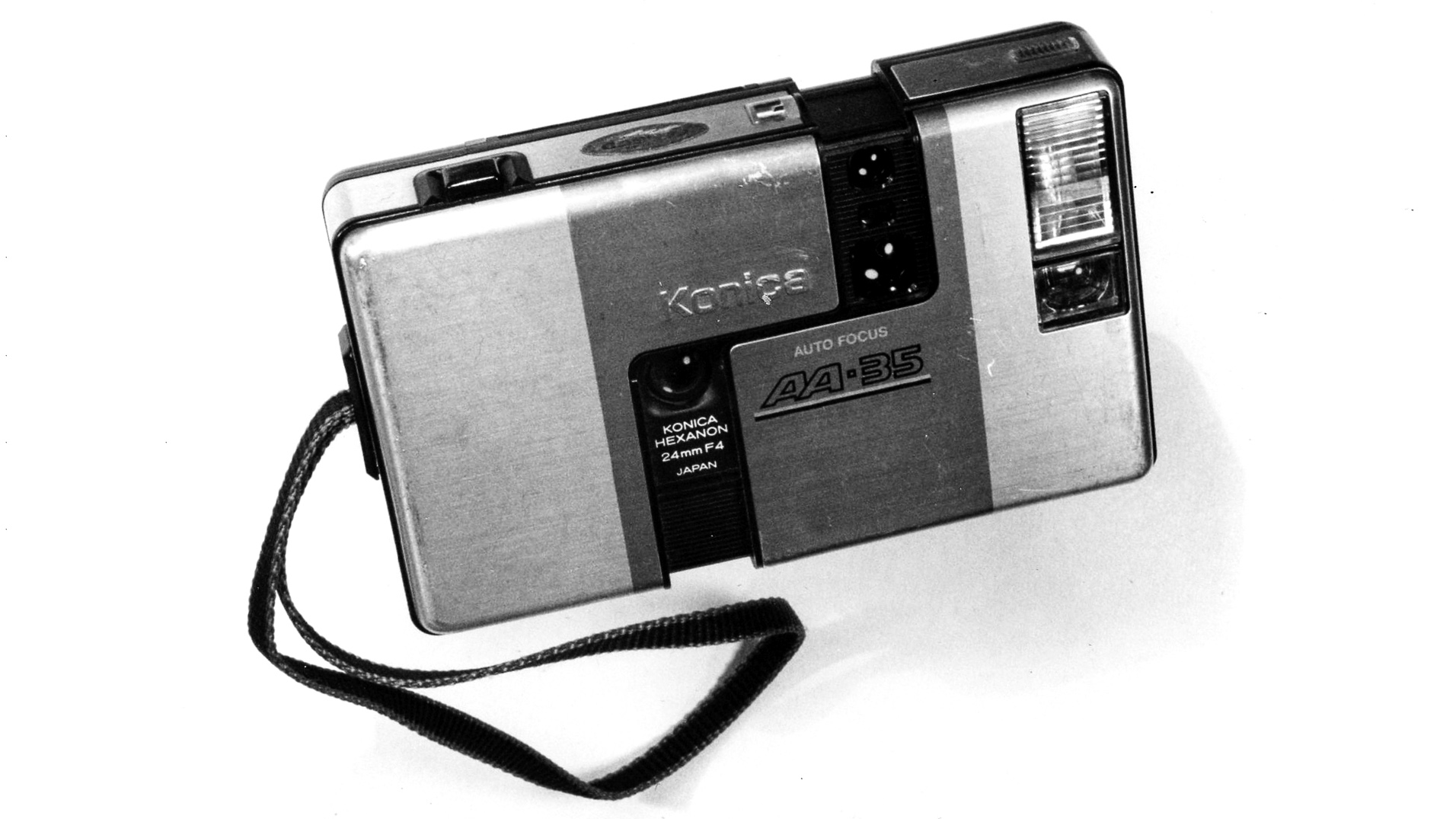
After both the 110 and Disc film formats ultimately proved disappointing in terms of image quality, half-frame 35mm cameras made a couple of re-appearances… again with the objective of going smaller without so much of a performance compromise. The Konica AA-35 was launched in 1984 – it was called the Recorder in some markets – and was as thin as a 35mm film cassette would allow with a nifty pull/push sliding design for opening a closing the lens as well as the autofocusing and metering windows. Interestingly, the film was loaded vertically so the AA-35’s standard frame aspect was landscape rather than the usual portrait of the early half frame models. Film advance and rewind were automatic.
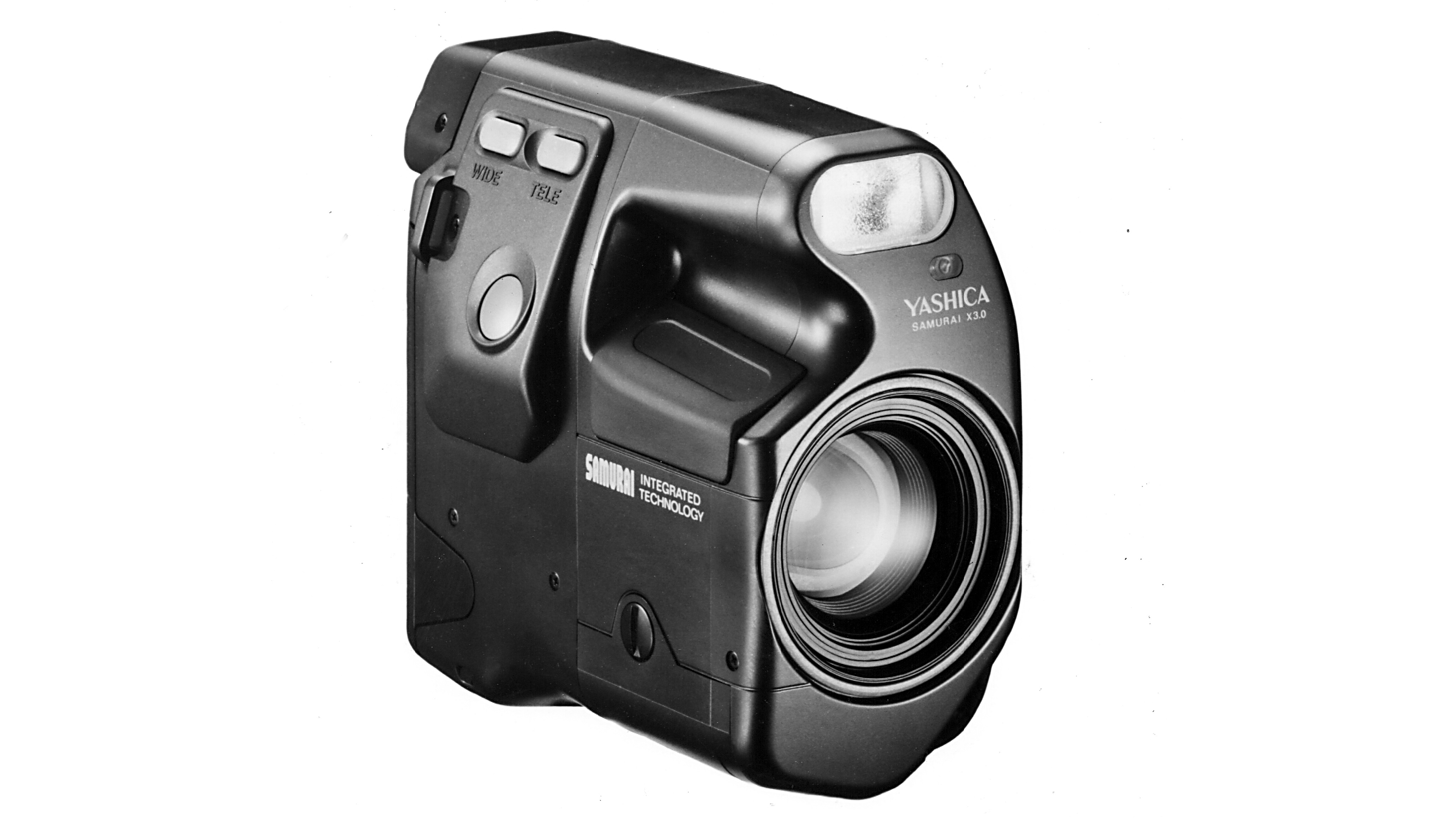
Introduced in 1987, the Yashica Samurai X3.0 was an even quirkier design but was designed as a more compact alternative to the ‘bridge’ cameras, which came and went before anybody realized what they were. The full frame 35mm models were bulky beasts due their big fixed zoom lenses and the concept was that these cameras bridged the gap between a 35mm SLR and a 35mm compact. The Samurai looked more like a video camera and still wasn’t exactly compact, but then it did have a 75mm f/3.5-4.3 zoom, a built-in flash and automatic everything. The X4.0 model with a 25-100mm zoom followed in 1988, but by now the conventional 35mm zoom compact was getting much smaller thanks to advances in lens design and bridge cameras were done.
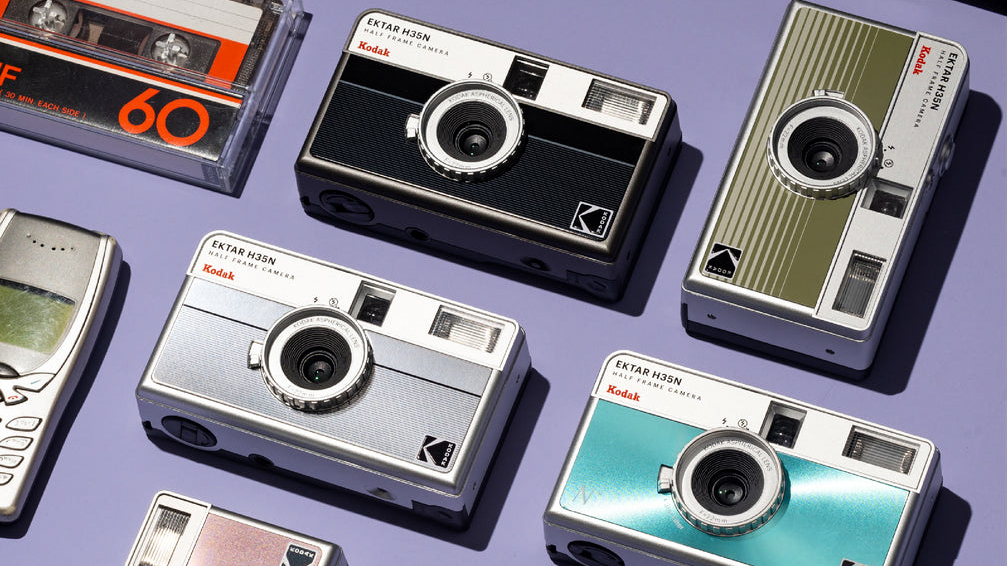
So was the half-frame 35mm format until the Kodak Ektar H35 was introduced in May 2022, followed by the Ektar H35N in September 2023. Both have sold well, undoubtedly making a contribution to the increasing momentum of the film photography revival.
But these Instamatic look-alikes are rather more basic than the Pentax 17… and also a lot cheaper. Despite essentially also being a point-and-shoot camera and over 60 years since its spiritual Ricoh ancestor, the all-new Pentax half-framer is destined to take things a lot further.
Check out our guides to the best film cameras, and the best 35mm film







